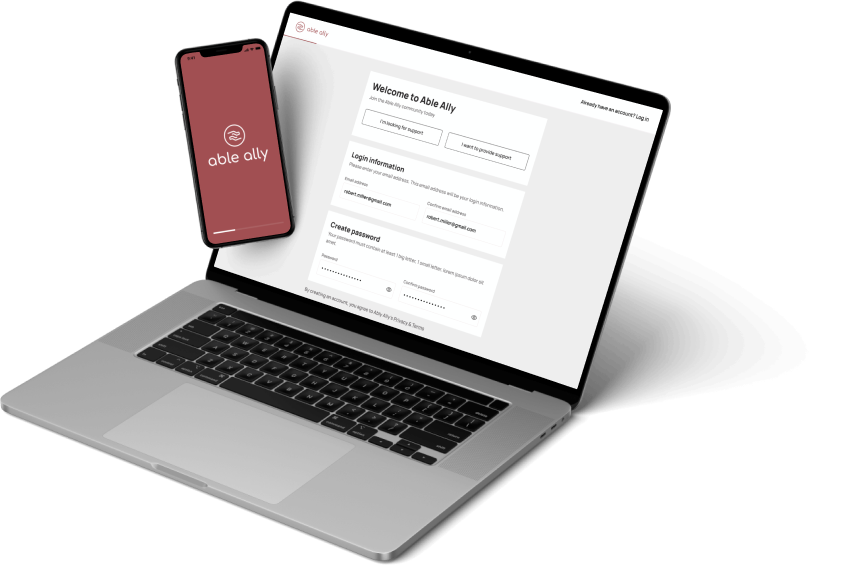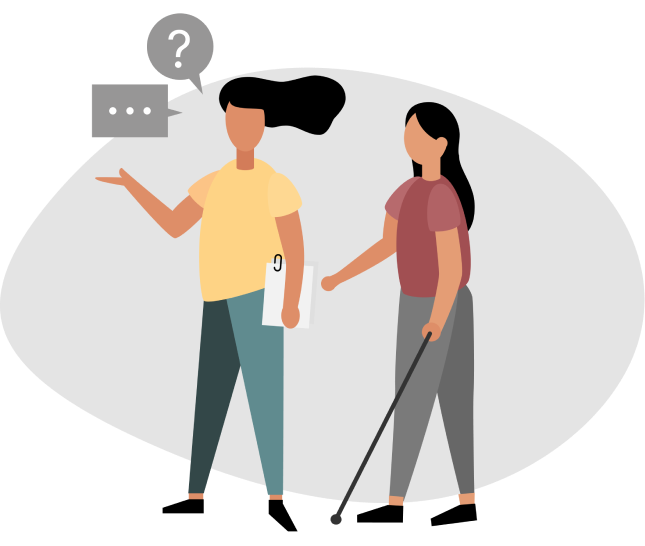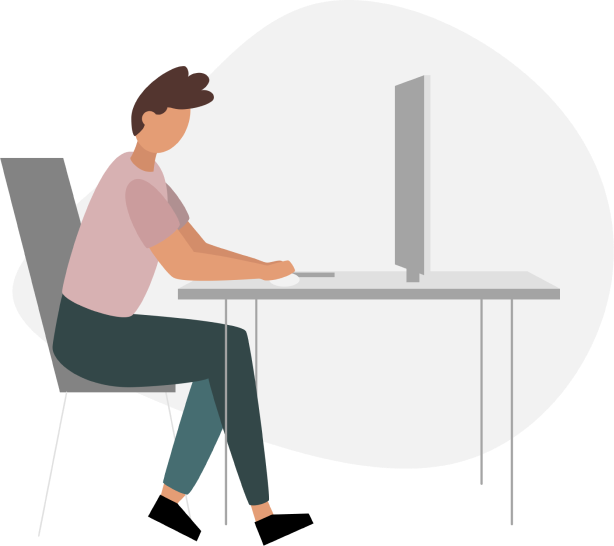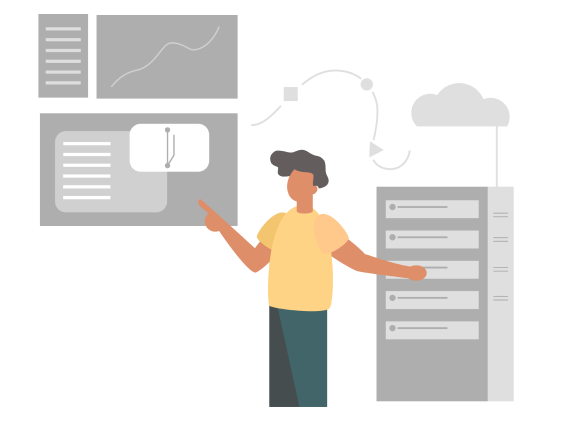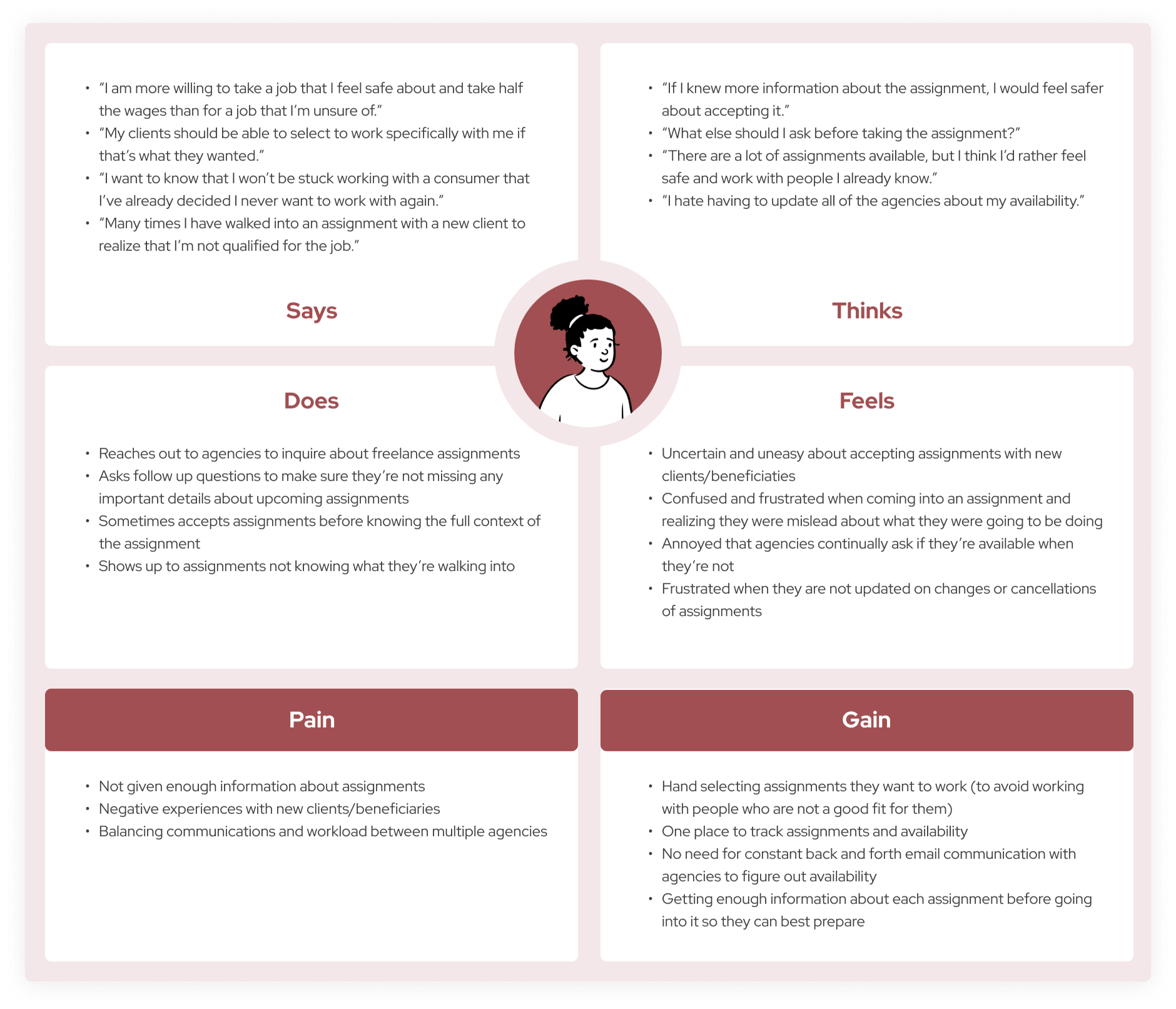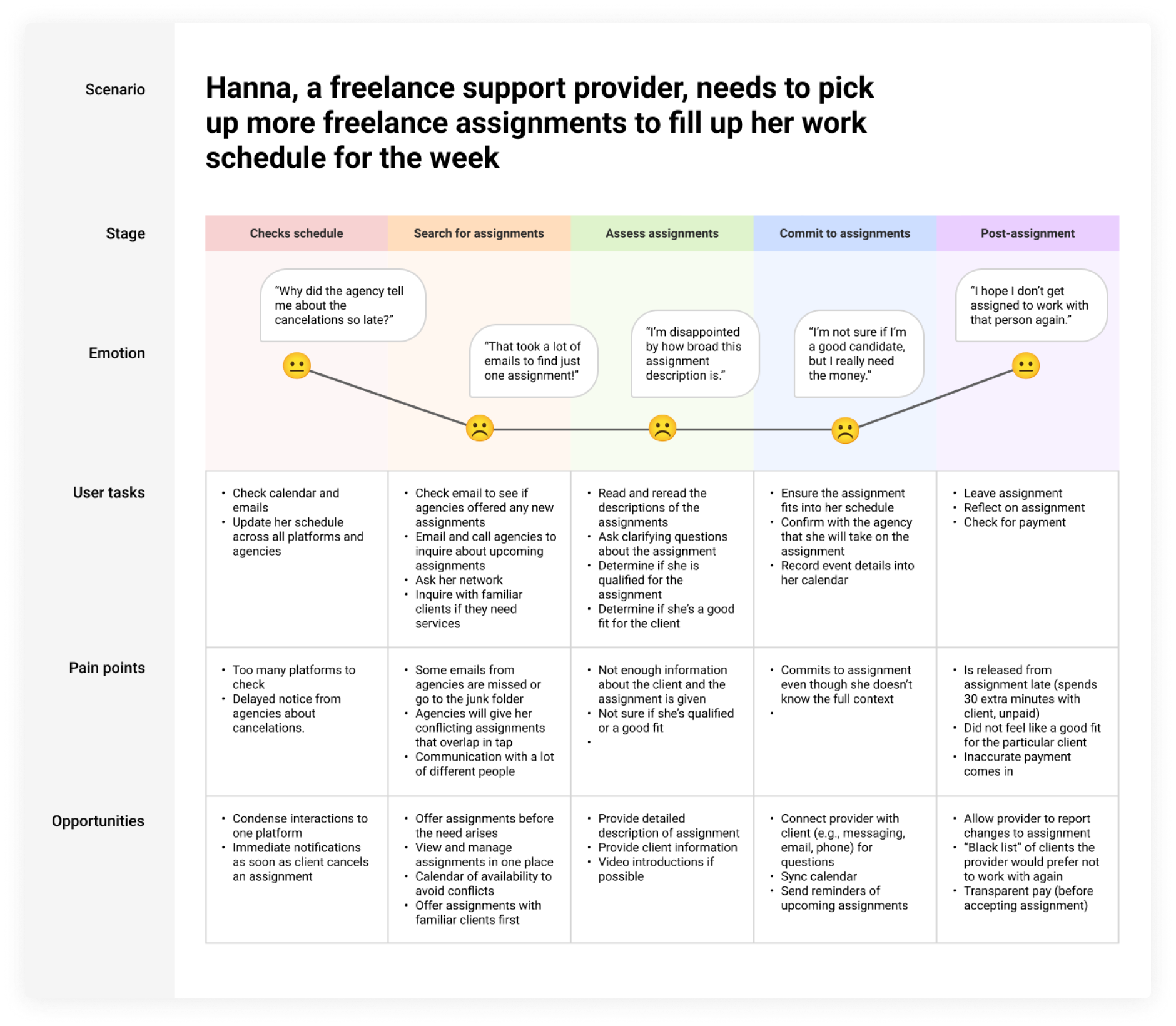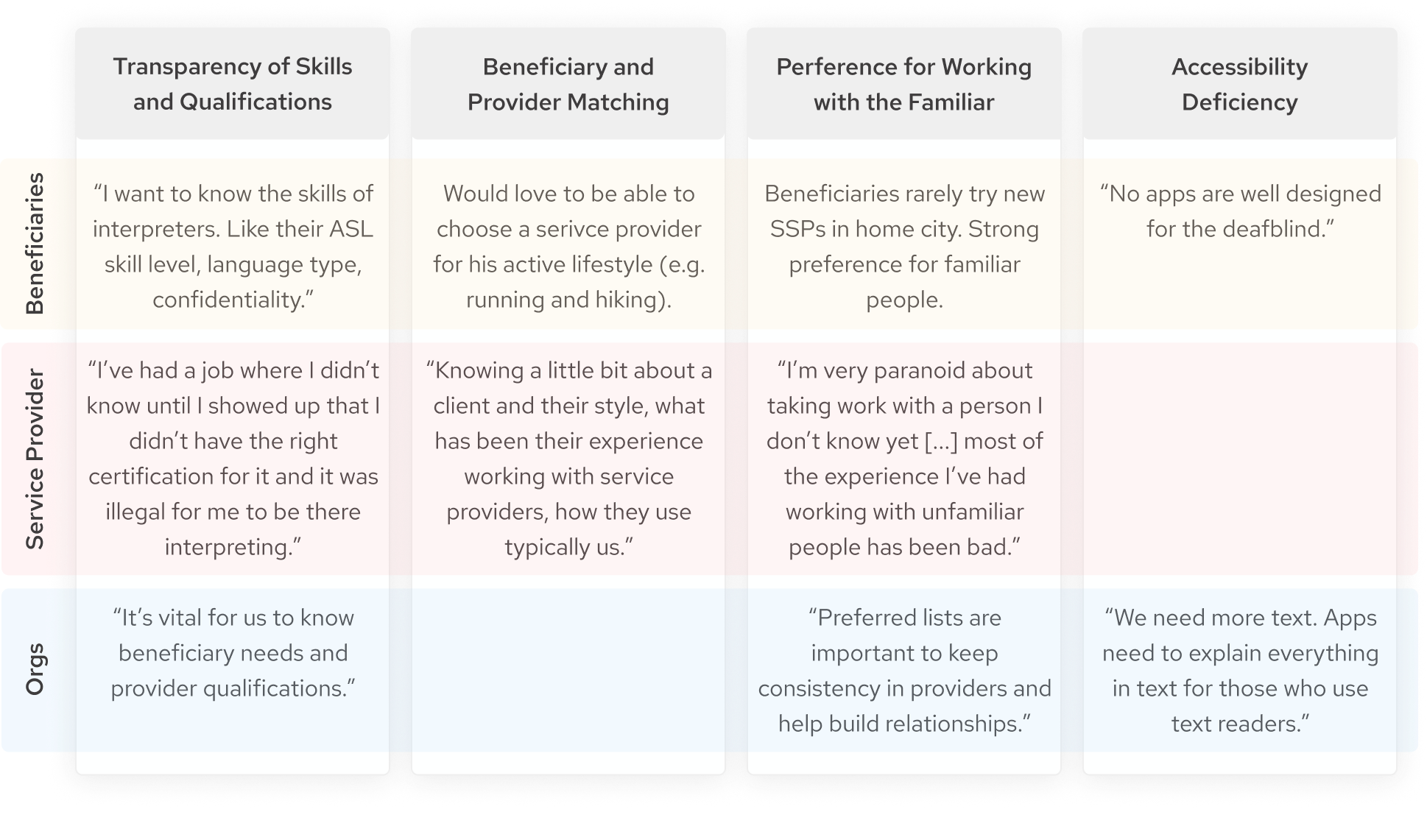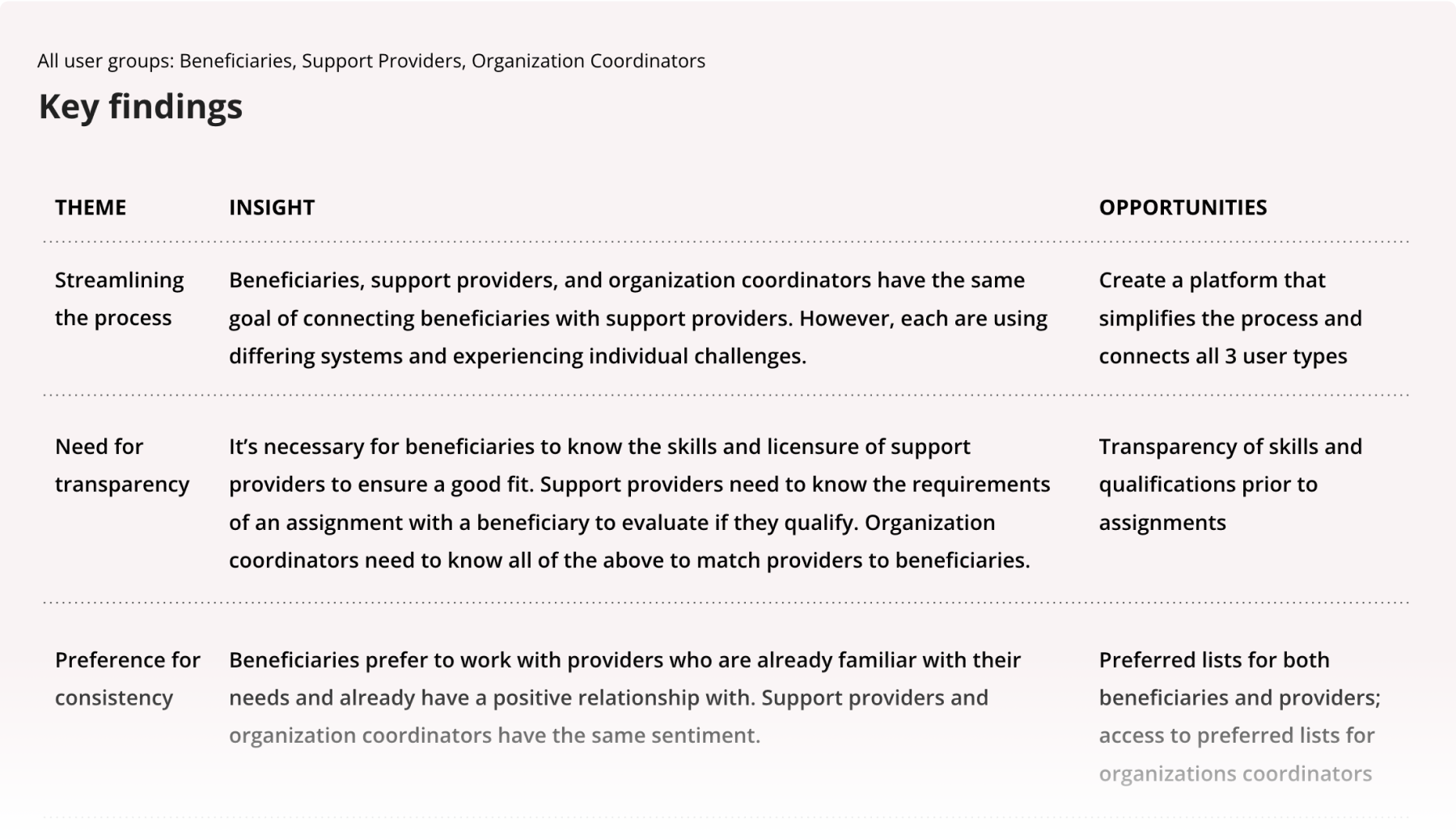RESEARCH OBJECTIVE
Identify the motivations, daily tasks, and friction points of Able Ally’s users.
Able Ally asked our team to help them validate their assumptions about their users and better understand their needs and pain points in order to create a more accessible and streamlined experience.
